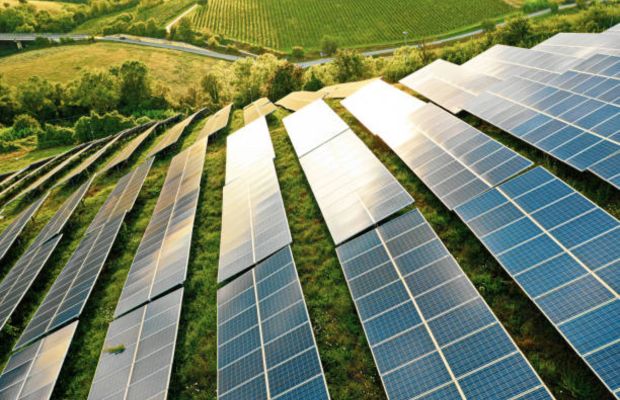Solar Power Europe in its recent report studied the role of solar in bringing energy security to the region. A recent study by Solar Power Europe found the electricity mix in Oman to be primarily based on natural gas. In 2022, almost 96% (38 TWh) of power generation came from natural gas, solar PV (1.5 TWh) accounted for almost 4%, while wind (0.1 TWh) for less than 1% (OPWP, 2023).
The report found that the highest Global Horizontal Irradiation (GHI) is concentrated in the governorate of Dhofar, within the south of the country and in the northeast areas, where solar intensity reaches 6.8-7.1 kWh/m2/day. However, the rest of the territory is also very favourable for solar energy production, with several areas recording solar activity of 6.0 kWh/m2/day.
The increase of solar energy in the electricity mix of the country is expected to lead to an increasing need for storage capacity as per the study. The report accredited this to be the that in its 7-Year Statement 2023- 2029, OPWP announced that studies will be conducted during 2023 to evaluate the potential role of energy storage technologies in the Sultanate of Oman’s power system over the period 2025 to 2040.
The report stated the ongoing initiatives of Oman‘s government that financially support the installation of rooftop solar panels. The study gave the example of the SAHIM program, which aims to develop 1GW of rooftop solar and have panels on at least 30% of residential buildings. To finance these incentives, the government announced its intention to issue bonds and loans, the proceeds of which will be used to support sustainability and environmental projects.
The study showed that new developments for solar power would help the country achieve the goal of 11% share of renewable electricity in the electricity mix by 2025 and 30% by 2030 (OPWP, 7-Year Statement 2023-2029). The study evaluated and found, currently, the total renewable energy installed and operating capacity to be 550 MW, with a 50 MW wind farm, developed by Masdar, from Abu Dhabi, (Dhofar I wind IPP) and a 500 MW PV plant (Ibri II Solar IPP), developed by ACWA Power, from Saudi Arabia, which started commercial operation in August 2021.
The study found major facilities in the country that include two refineries in Mina Al-Fahal and Sohar (with a total crude oil processing capacity of 303,000 barrels per day), and a third plant under construction in Duqm with a capacity of 230,000 bpd (AET, 2023). The report gave the example of countries that hosted the Miraah Concentrated Solar Power (CSP) project. This project uses heat generated by sunlight, to improve the efficiency of oil extraction by reducing its viscosity. With a thermal capacity of more than 1 GW, the project will deliver “the largest peak energy output of any solar plant in the world”.
The study reviewed and found that starting in 2020, several projects were launched that are expected to become operational in the coming years. It gave the example of the Manah Solar I and Manah Solar II projects that are scheduled to begin commercial operations first half of 2025. These projects are expected to jointly add 1 GW to the total installed renewable generation capacity.
Additionally, in January 2024, Oman launched a public tender for a 500 MW solar project, Ibri Solar III, with commercial operations due to begin in Q4 of 2026. The document addresses renewable energy planning for the 2025-2029 period, including public tenders for three new solar projects and five wind projects, in addition to those already planned.
These tenders for solar PV projects are expected to include the Mis Solar IPP and two projects termed Solar PV IPPs. The MIS Solar IPP has a 500 MW capacity and is located in Al Dakhiliyah, in the north of the country. The tender for this project is expected to be launched in 2025, with commercial operation expected by 2027. The Solar PV IPP projects will have a combined capacity of 1 GW (500 MW each), and are due to be developed in Manah, with commercial operations starting in 2029.
The Oman Government also finances innovative and small-scale projects to integrate solar energy more widely in the country. The 1 GW Miraah CSP project, developed by Petroleum Development Oman in southern Oman uses steam to improve the oil recovery process of the Amal oilfield (Power Technology, 2018). Oman also financed the construction of 11 small-scale solar-diesel hybrid facilities launched by the ‘Sahim’ contributes to the initiative and lent support to small-scale C&I and residential solar installations (International Trade Administration).
Oman’s significant interest in the development of renewable hydrogen makes it a very attractive country for the development of new renewable energy capacity. To reach its ambitious production target Oman will need 16-20 GW by 2030, 65-75 GW by 2040, and 175-185 GW of renewable energy by 2050. According to government assessments, this will require approximately 300 million solar panels and 10,000 wind turbines by 2050.


